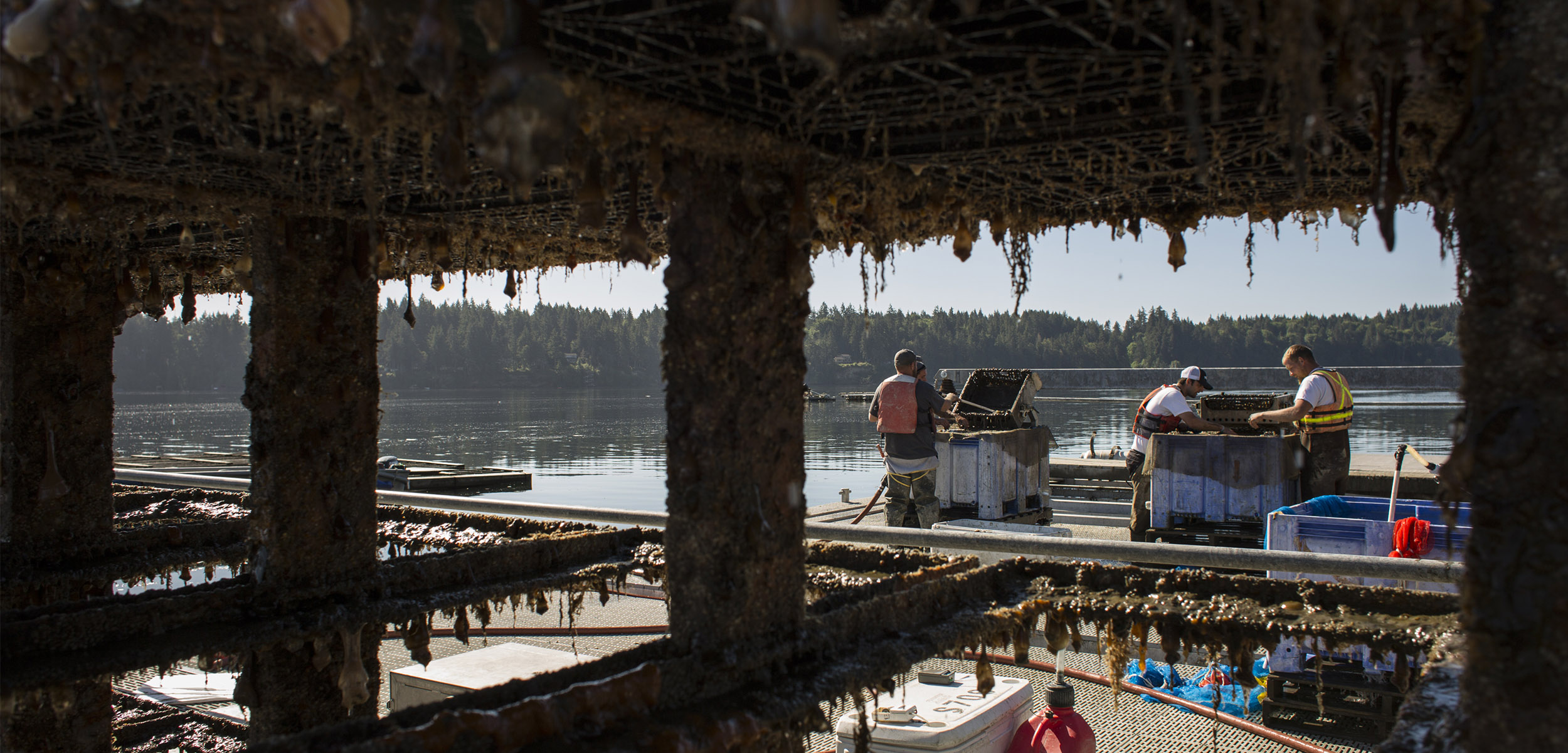Middle Schoolers Tackle the Heat Dome
Washington State seventh graders are studying how the heat dome hurt shellfish and, in the process, learning to engage with science in a new way.
Article body copy
Last summer’s heat dome exacted a huge toll in the northeast Pacific. Hundreds of people died because of the extreme heat and its lingering effects. A perfect storm of high temperatures, low tides, and a noonday sun that scorched exposed tidal flats meant marine life suffered as well. The heatwave killed, by some accounts, one billion sea creatures. The marine toll was felt especially acutely by the US $107-million shellfish aquaculture industry in Washington State.
One of the people paying close attention was Tim Smith. An aquatic ecologist and aquaculture sustainability consultant turned science teacher, Smith recognized the scale of the problem. But just a few months later, when he began working at Pioneer Middle School in Shelton, Washington, a hotbed town for shellfish farming, he recognized an opportunity.
The heat dome, Smith thought, was the perfect chance to engage kids in science that is directly related to their lives, while also providing real insight that may one day be used to help shellfish growers during the next heat dome.
In previous teaching gigs, Smith had helped students compete at the International Science and Engineering Fair—a prestigious contest that has even seen some older students file patents, publish papers, and receive scholarships based on their research. Pioneer Middle School requires all students to create a science fair project, so when Smith arrived at the school in September 2021, he had a plan.
Smith reached out to shellfish growers such as Taylor Shellfish Farms to find out how the heat dome had affected them. “They have lists of things they want to research,” Smith says. He then took the problems to his students, proposing a number of avenues for research, for example studying the effect of setting up sprinkler systems, of moving shellfish to deeper waters or installing shade cloth, and even selectively breeding shellfish to be more heat resistant.
Seventh-grader Matthew Pursey’s interest was piqued. He quickly came up with an experiment to conduct.
“I’m going to try to apply water in different places on the oyster shell and see how much it cools,” says Pursey, adding that he’ll have to learn about new ideas like measuring water temperature to see how it affects shellfish mass.
“If this project is successful, the part that I’m most excited about is people looking at it and just saying like, Wow, this could work,” Pursey says.
Another seventh grader, Courtney Koth, whose uncle works as a diver for Taylor Shellfish Farms, took a different tack.
“My science project is about littleneck clams’ response and behavioral reaction to heat,” she says. Koth plans to put clams under a heat lamp and record their response with an infrared camera. “I thought it might be important so in the future when stuff happens, we will know how to help them.”
Diani Taylor, general counsel for Taylor Shellfish Farms and one of the shellfish producers that Smith chatted with, is excited about what’s happening in the classroom. “It’s that intersection of engaging kids in hands-on learning about real issues in their community, and in issues we really care about. It’s just phenomenal,” Taylor says. “I think the studies that they’re doing—even if they’re not very elaborate—are going to have a real impact and could help shape the direction that research goes in the future.”
While potential solutions for shellfish growers may be one eventual outcome from the students’ research, Smith wants to help his students think about the issue more holistically. “We might do something like talk to tribal leaders about their perspective,” says Smith. That could help the students develop a broader understanding of how shellfish are used by everyone in the area.
Joseph Pavel, the natural resources director of the Skokomish Indian Tribe, is skeptical the students’ projects will yield real solutions for protecting the shellfish that the tribe relies on against future extreme heatwaves—especially dispersed populations of wild shellfish rather than those in densely packed aquaculture settings. But Blair Paul, a shellfish biologist with the tribe, says the project is symbolic of the banding together he’s seen between affected communities in the wake of the heat dome. That mutual support and collaboration, he says, is “the one positive that I would say that I’ve seen come out of [the damage caused by the heat dome].”
Yet Smith’s efforts to capture his students’ interest in science is something that Aimee Christy, a biologist with the Pacific Shellfish Institute who is assisting with the project, is appreciative of.
“The kids are more engaged than in any class I’ve ever been in. And they just went off—they were coming up with all kinds of really cool ideas.”
Smith is still learning and adapting along with his students. But there’s one thing he’s sure about: “When you do a project with a kid and you push them to do something more serious and more focused on answering a question scientifically, using real rigor, you know that this is probably the first time they’ve tried that hard.”
At that point, he says, “it’s not really about the product anymore. It’s about them, and helping them become the kind of person who can create that product.”

